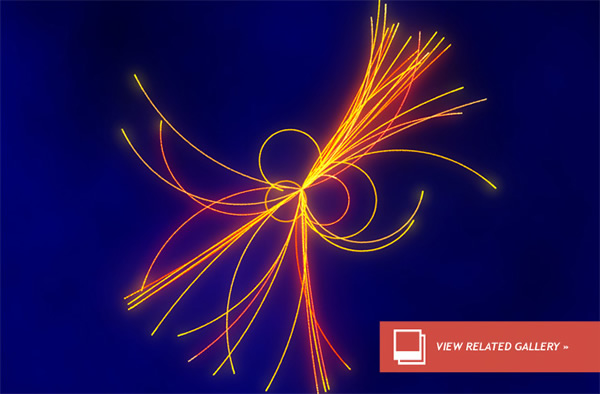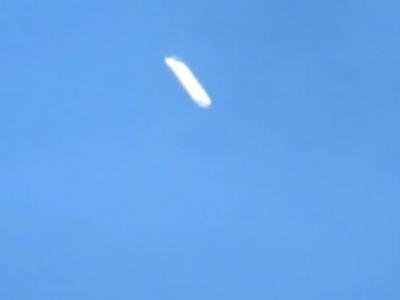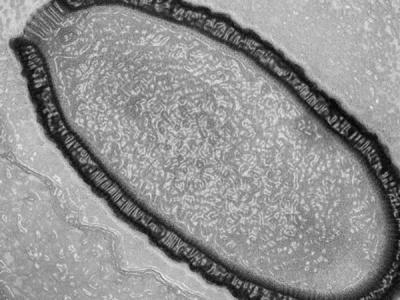Higgs-Hatin': 'Vanilla' Boson May Be Real
Higgs-Hatin': 'Vanilla' Boson May Be Real
Forget the Higgs boson’s delusions of grandeur, the exchange particle that gives stuff mass appears to be something of a disappointment.
No, physicists haven’t disproven its existence. And no, the Higgs boson hasn’t jetted off to a Caribbean island, run up a huge bar tab, thrown TVs out of hotel windows and been arrested for getting into a drunken brawl — rockstar style. On the contrary.
Actually, it’s looking more and more likely that the Higgs boson is kinda boring. In the words of Caltech cosmologist Sean Carroll, the Higgs boson is “looking pretty vanilla.” He’s not alone.
Decades of searching and a 7.5 billion Euro ($9bn) particle accelerator later, why is everyone so down on one of the biggest discoveries of the century?
This week, physicists descended on La Thuile, Italy, for the Rencontres de Moriond conference to discuss all things physics and cosmology. Scientists from the two main experiments — the CMS and ATLAS detectors — at the particle-smashing Large Hadron Collider (LHC) near Geneva, Switzerland, were in attendance to discuss their much anticipated results on, amongst other things, the Higgs boson.
Although the announcement of the discovery of a “Higgs-like” particle last summer took the headlines, data is still being processed so particle physicists can decisively say, once and for all, that they have discovered a real Higgs boson. In the world of particle physics, one needs to have an extremely high level of certainty before a discovery can be confirmed. On July 4, 2012, CERN scientists said that they had detected a strong signal — to a statistical probability of “5-sigma” — of a particle with the same predicted energy of a theoretical Higgs boson.
One Higgs boson model predicts the particle has a rest-mass energy of 125 gigaelectron volts (GeV) — 125 times the mass of a proton. The LHC was producing an “excess” of photons that indicated they’d discovered something with an energy of 125 GeV.
Aside: The Higgs boson cannot be detected directly; it can only be detected through the particles it decays into. In one model of “Higgs decay,” the boson decays into two photons. These photons can be detected by the complex array of detectors inside the ATLAS and CMS experiments — so when you hear the term “excess of photons,” it means that some decay process after a particle collision is generating photons in a measurable quantity. By analyzing the energies of these photon excesses, through a little physics detective work the parent particle can be revealed.
But just because a particle has been detected with an energy of 125 GeV, it doesn’t mean it is that specific Higgs boson. That’s why the particle is “Higgs-like” — just because it looks like a Higgs and quacks like a Higgs, in particle physics, it doesn’t necessarily mean it IS a Higgs. In the case of the “Higgs-like” particle, although the odds are heavily stacked in favor of it being a bona fide Higgs boson, there may be the slightest of chances that it is an unexpected, exotic particle that has the hallmarks of being a Higgs when, in fact, it’s not.
So, that’s what LHC physicists have been busy doing: taking more results, crunching more data and running more simulations in an effort to reduce the margin for error.
When they presented their results on Wednesday (March 6), LHC scientists had a not-so-groundbreaking announcement: “Physicists speaking today … have announced that the new particle discovered at CERN last year is looking more and more like a Higgs boson,” wrote CERN’s official spokesman James Gillies. Exciting, right? Thought not. A slew of science writers didn’t think so either.
This discovery may be looking more and more like the Higgs boson, so what will it take until we can definitively say that it is the Higgs? Everything seems so positive, so why all the Higgs-hatin’?
As discussed by Gillies, LHC researchers are working hard to measure other characteristics of the “Higgs-like” particle. The clincher should come when physicists deduce the particle’s “spin.” The spin of a particle in quantum mechanics is analogous to the amount of angular momentum that particle carries. The theoretical Higgs boson has a spin of zero. Should this particle be measured to have a spin of 2, physicists will know that they are being duped by an exotic particle that shouldn’t exist in our current model of physics and will “possibly linked to the way gravity works,” Gillies added.
“Until we can confidently tie down the particle’s spin,” said CERN Research Director Sergio Bertolucci, “the particle will remain Higgs-like. Only when we know that is has spin-zero will we be able to call it a Higgs.”
In the (unlikely) event that the particle doesn’t have a spin of zero, physics would be turned on its head! It would be a revolution — the universe that we thought we knew and understood is weirder than our weirdest dreams! In case you haven’t already guessed, this scenario excites physicists, a lot.
The current scenario (that’s looking most likely) would prove the existence of a particle theorized in the 1960s, thereby tying up the Standard Model of physics in a pretty, neat, red quantum bow. This is decidedly boring in comparison. What’s worse, of all the possible theorized Higgs species, what if the most “vanilla” option is proven to be correct?
And there you have a strange juxtaposition — a profound discovery that’s also an anticlimax.
Although I’d argue that the Higgs boson discovery is a triumph of modern science and only the beginning of a golden era for quantum physics, many will be subdued at seeing the Standard Model being completely proven — of which the Higgs boson is the last component to be discovered — thereby disproving more exciting possibilities of exotic physics beyond known physics.
There’s a lot of data still to be processed, but when the LHC is switched back on again in 2015 after a planned refit, physicists will still be hopeful that some exotic physics may be discovered — such as the supersymmetry hypothesis — when the collider begins slamming protons together at even higher energies.
Mar 7, 2013 09:10 PM ET by Ian O'Neill












